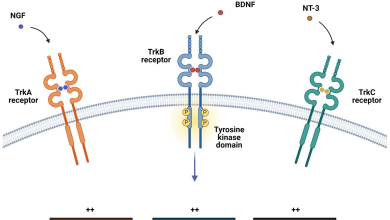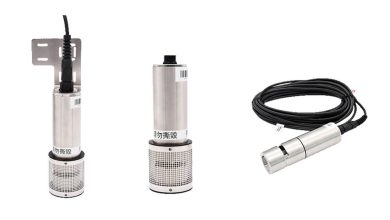Skin Tag Under Eye: Understanding, Causes, Treatment, and Prevention
Skin Tag Under Eye: Understanding, Causes, Treatment, and Prevention

1. Introduction
Skin tags are benign growths that can occur on various parts of the body, including sensitive areas such as under the eyes. Although they are generally harmless, skin tags can be unsightly and cause discomfort. This article will explore the nature of skin tags under the eyes, their causes, symptoms, treatment options, and preventive measures.
2. What Are Skin Tags?
2.1 Definition
Skin tags, medically known as acrochordons, are small, soft pieces of skin that protrude from the surrounding skin. They are typically flesh-colored and can vary in size.
2.2 Characteristics
Skin tags are usually painless and can range from a few millimeters to several centimeters in size. They often have a stalk-like appearance and can be found in various locations on the body, including the neck, armpits, eyelids, and under the breasts.
3. Causes of Skin Tags Under the Eye
Understanding the causes of skin tags can help in preventing their development. Here are some common factors that contribute to skin tags under the eyes:
3.1 Genetics
Genetic predisposition plays a significant role in the development of skin tags. If family members have a history of skin tags, there is a higher chance of developing them.
3.2 Friction
Skin tags often develop in areas where skin rubs against skin or clothing. The delicate skin around the eyes can be prone to friction, especially during activities like sleeping, squinting, or rubbing the eyes.
3.3 Hormonal Changes
Hormonal fluctuations, particularly during pregnancy or menopause, can lead to the formation of skin tags. Women may notice an increase in skin tags during these periods due to changes in estrogen levels.
3.4 Obesity and Metabolic Factors
Obesity is associated with an increased risk of developing skin tags. Excess body weight can lead to more skin folds, increasing friction and promoting the growth of skin tags.
4. Symptoms and Identification
4.1 Appearance
skin tag under eye typically appear as small, soft, flesh-colored or slightly darker growths. They can be round or oval and may have a smooth surface or be slightly wrinkled.
4.2 When to Seek Medical Attention
While skin tags are usually harmless, it’s essential to consult a healthcare professional if you notice changes in the size, shape, or color of a skin tag. Bleeding, pain, or signs of infection are also reasons to seek medical attention.
5. Diagnosis
Diagnosis of skin tags is usually straightforward. A healthcare provider will examine the growth and may ask about your medical history. In rare cases, a biopsy might be performed to rule out other skin conditions.
6. Treatment Options
Although skin tags are not medically necessary to remove, many people opt for treatment for cosmetic reasons or discomfort. Here are some treatment options:
6.1 Home Remedies
- Tea Tree Oil: Known for its antiseptic properties, applying tea tree oil to a skin tag may help dry it out.
- Apple Cider Vinegar: Its acidity can break down the skin tag, although caution is advised, especially near sensitive areas like the eyes.
- Dental Floss: Tying off a skin tag with dental floss can cut off its blood supply, causing it to fall off. This method should only be performed on skin tags that are not located on the eyelids or near the eyes.
6.2 Medical Treatments
- Cryotherapy: This involves freezing the skin tag with liquid nitrogen, causing it to fall off within a few days.
- Electrosurgery: A procedure that uses electrical currents to burn off the skin tag.
- Ligation: The skin tag is tied off with a surgical thread to cut off its blood supply.
6.3 Surgical Options
For larger skin tags or those that are difficult to treat, a doctor may recommend excision. This involves cutting the skin tag off using a scalpel under local anesthesia.
7. Preventive Measures
While it may not be possible to prevent skin tags entirely, you can reduce the likelihood of developing them by:
- Maintaining a healthy weight.
- Reducing friction in areas prone to skin tags by wearing loose-fitting clothing.
- Monitoring hormone levels and consulting a healthcare provider if hormonal imbalances are suspected.
- Protecting your skin from irritation and trauma, particularly around sensitive areas like the eyes.
8. Living with Skin Tags
Living with skin tags can sometimes be challenging, particularly if they are in visible or sensitive areas. It’s important to remember that skin tags are generally harmless and common. However, maintaining a skincare routine that includes moisturizing can help keep the skin healthy and potentially reduce the formation of new skin tags. Additionally, if you choose to remove a skin tag, ensure you follow proper care guidelines post-removal to avoid infection.
At Celibre Medical Corporation, we offer the safest and most effective laser and cosmetic injection treatments available, only using the most current FDA-approved procedures. By delivering superior results and the highest patient-care level, we have become a trusted name in the laser dermatology and cosmetic injection industry.
9. Conclusion
Skin tags under the eye can be an annoyance, but they are typically harmless. Understanding their causes and treatment options can empower you to manage your skin health effectively. Whether you choose to leave them be or pursue treatment, staying informed will help you make the best decisions for your skin. If you have concerns or notice changes in your skin tags, consulting a healthcare provider is always a wise choice.








